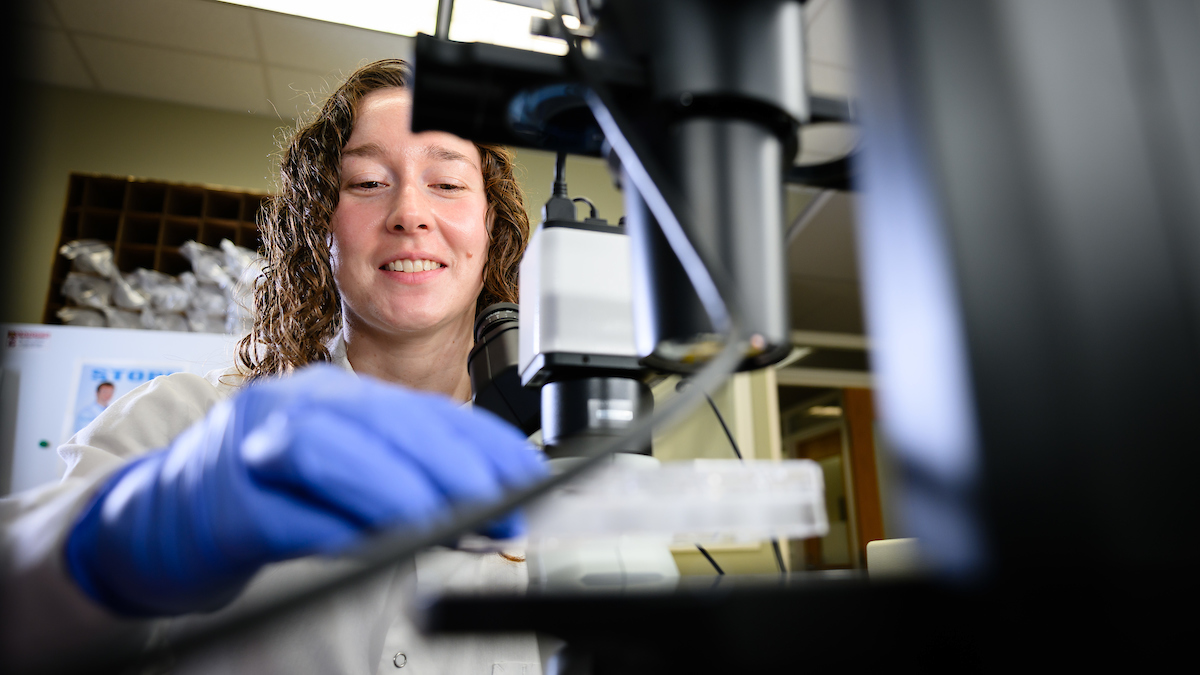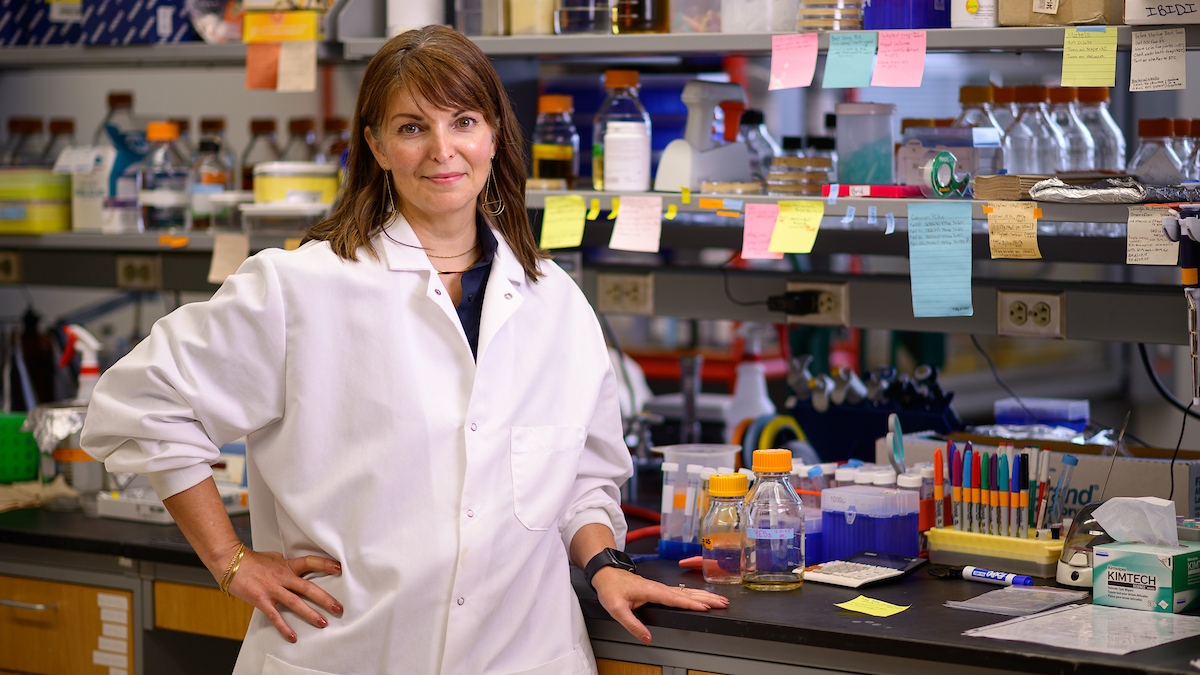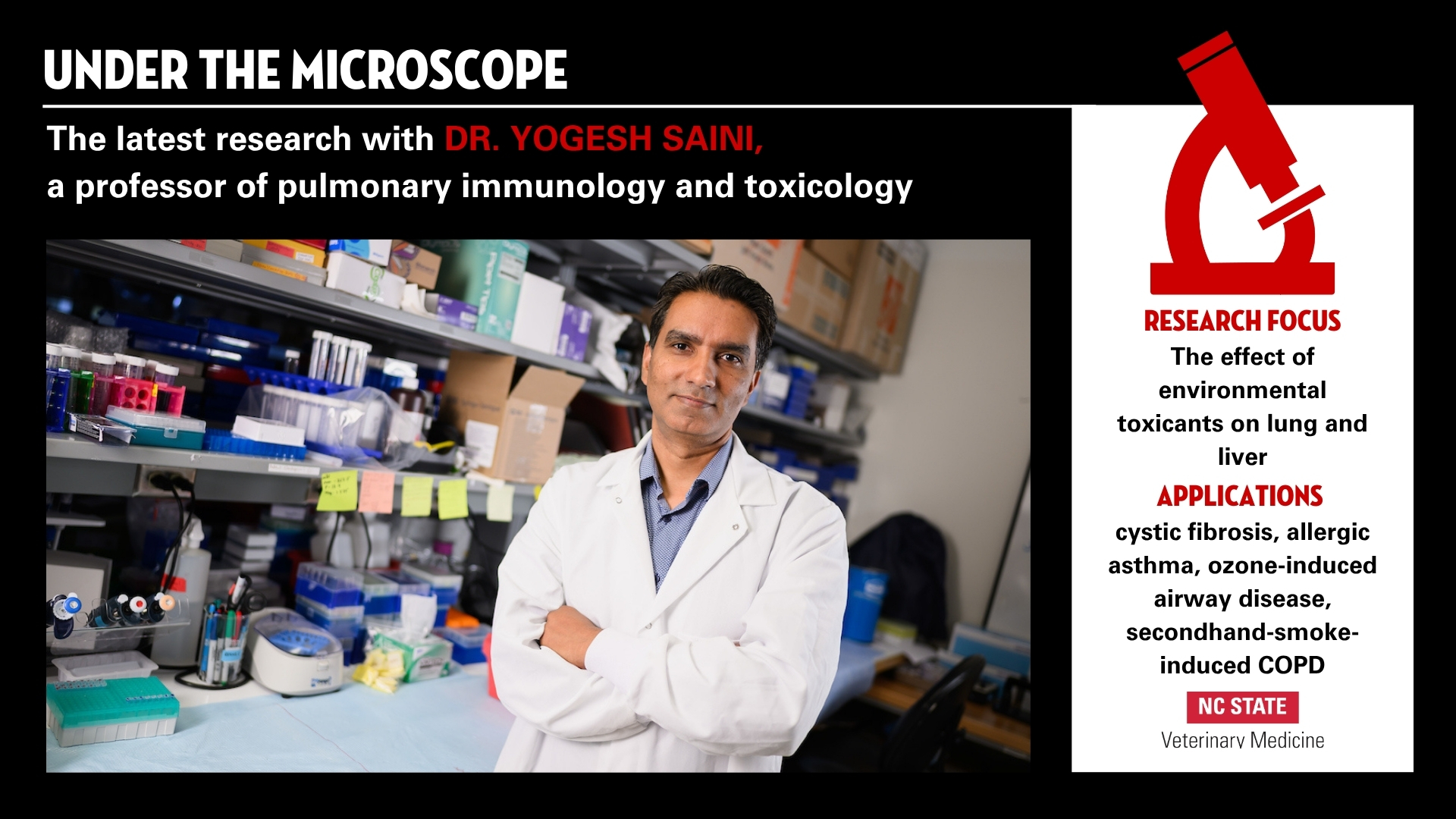February 2019 Research Roundup

- A study co-authored by Kyle Mathews outlines a new surgical approach to repairing a type of canine intestinal obstruction caused by a foreign body.
The study, published in Veterinary Surgery, documents the first use in a clinical setting of a vascularized jejunal patch graft to repair a duodenal perforation in a dog. During the surgery, damage to a segment of the first part of the small intestine, the duodenum, is repaired by suturing a graft incised from a healthy segment of the middle part of the small intestine, the jejunum.
Intestinal obstruction from ingesting a foreign body is common in small animals. The study shows feasibility in using the new repair option if more complex surgery is required for duodenal injury.
- The emerging pathogen equine coronavirus, or ECoV, shares clinical features with Salmonella, suggesting the diseases should be differential diagnoses when horses have fever and signs of intestinal disorders, according to new research.
Co-authors Johanna Elfenbein, Anthony Blikslager and Arlie Manship found that ECoV should be considered when horses have a fever, anorexia, intestinal disease and low white blood cell counts.
The study, the first comparing ECoV and Salmonella infections, helps establish a disease signature to increase clinical recognition of ECoV infections. The research is published by the Journal of Veterinary Internal Medicine.
- Petra Bizikova is the lead author on a comprehensive review of feline pemphigus foliaceus, one of the few large case series written on the common autoimmune skin disease for cats.
BMC Veterinary Research published the research, which reviews original clinical cases for an overview of what’s known about feline PF, a pustular erosive and crusting dermatosis usually involving the face, ears and feet.
Among the findings: PF usually affects middle-aged cats, and domestic short-haired and Siamese cats are most commonly affected. Various treatment options and causes are outlined and the condition is compared to PF and PF-like diseases in humans and dogs.
- New research demonstrates the feasibility of continuous sampling from a cow’s udder using ultrafiltration to aid studies of drugs the milk.
For the study, published in the Journal of Dairy Science, an ultrafiltration probe was placed into the gland cisterns in normal cows and those with naturally occurring mastitis, or breast tissue inflammation.
The results noted that collection of ultrafiltration samples from the mammary gland of cows is a viable way to assess drug concentrations in the milk while allowing for continual normal milking. Treatment of mastitis accounts for a large proportion of therapeutic drug use on dairy farms.
Co-authors include Danielle Mzyk, undergraduate pre-vet student Claire Bublitz, Hannah Sylvester, alum Ginger Hobgood, Ronald Baynes and Derek Foster.
- For the first time, the emerging pathogen Pasteurella canis has been found to have the ability to cause bacterial infective endocarditis in dogs.
In the study, P. canis was isolated from the blood and heart valve of an adult dog for the first time, with researchers detailing the clinical presentation and microbiological findings associated with the new agent causing infective endocarditis, inflammation of the tissue lining the heart’s inner surface, an underdiagnosed cause of severe morbidity and mortality in dogs.
In human medicine, P. canis has been increasingly recognized as a cause of numerous types of infections. The new research could lead to earlier diagnostic consideration of P. canis infective endocarditis and therefore improved medical outcomes. Ed Breitschwerdt, Zachary Kern, Nandhakumar Balakrishnan, Pradeep Neupane and Olivia Swartley co-authored the study, published in Veterinary Microbiology.
- A survey of 10 cases of loggerhead turtles receiving a type of cataract surgery shows successful results for the endangered species.
Hans Westermeyer and Craig Harms co-authored the study that followed up with loggerheads after they had cataracts removed through phacoemulsification, which uses a mechanical tool to break up the cataract, emulsifying the lens and aspirating it from the eye.
All turtles showed improved vision following surgery and were eventually released. Two turtles re-encounted a year or more after release showed signs of normal growth and the ability to capture prey in the wild. The study also notes surgical challenges in the cases, offering potential guidelines for continued successful treatments in the future.
Loggerheads are the largest living hard-shelled turtle and the most abundant sea turtle species found in U.S. coastal waters, with a large population along the southeast Atlantic coast. Veterinary Ophthalmology published the study.


